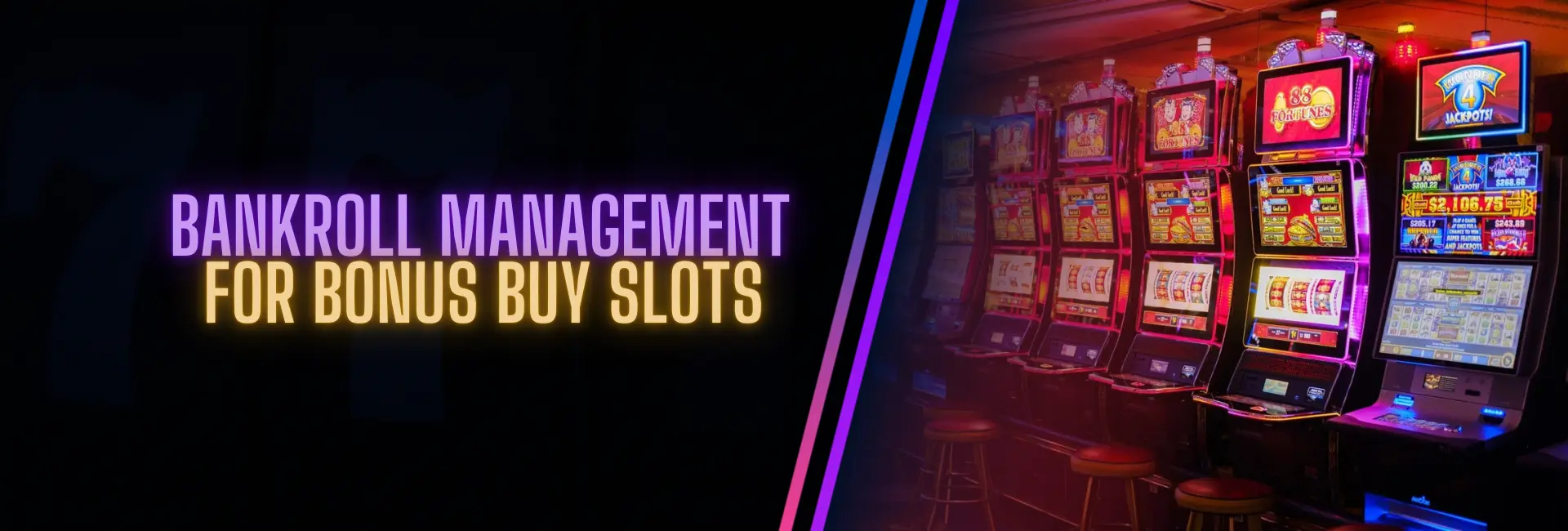
💸 Bankroll Management for Bonus Buy Slots
| ⚖️ Snapshot | 📊 Numbers You’ll Use |
| Bankroll size | 100× your average feature cost |
| Session bankroll slice | 10 % – 15 % of full roll |
| Risk tier | Low (<50× stake), Medium (50 – 100×), High (100×+) |
| Stop-loss | 30 % of session roll |
| Profit lock‑in | Cash out or downshift after +150 % session ROI |
Why it matters: Bonus Buy slots let you skip the base game – great for adrenaline, brutal for budgets. A solid bonus buy bankroll management plan keeps the fun alive and the red numbers away.
⚡️ How Bonus Buys Turbo‑Charge Volatility
Buying straight into a feature concentrates variance: you’re staking 50× to 200× your bet in one click and collapsing hundreds of spins into a single outcome. One cold bonus can torch 4 % – 6 % of your total roll in seconds, something that rarely happens in standard slot play. That’s why a dedicated bankroll strategy bonus buy slots approach is non‑negotiable.
Example: In Money Train 4 the Persistent feature costs 500×. If your spin stake is €1, that’s a €500 outlay – equivalent to ~10 minutes of regular spins. A drawdown here hits fast and deep.
🧮 Crunch the Core Formula
- Pick a realistic stake (spin value) you won’t be tempted to bump mid‑session.
- Multiply by 100× to get a comfortable full‑day bankroll.
- Slice 10 % – 15 % as today’s session roll.
- Divide by feature price to learn how many bonuses you can buy before re‑loading.
- Log each result in a sheet or note app – visibility curbs tilt.
Quick calc: €0.60 stake → typical 100× bonus cost = €60. Target roll = €60 × 100 = €6 000 total, €600 for the session. You can buy 10 bonuses before reassessing.
🎲 Choose Your Risk Tier (and Adjust Bet Size)
🟢 Low‑Volatility Buys (e.g., Sweet Bonanza, Gates of Olympus)
- Price: 50× – 80× stake.
- Hit rate: High; 1 in 3 – 4 buys often returns 70 %+.
- Bankroll tip: You can stretch to 12 % – 15 % of roll per session.
🟠 Medium‑Volatility Buys (e.g., Sugar Rush, San Quentin)
- Price: 100× stake.
- Hit rate: Middling; expect long breakeven streaks.
- Bankroll tip: Cap session at 10 % and set tighter stop‑loss.
🔴 High‑Volatility Buys (e.g., Money Train 4 Super, Wanted Dead or a Wild VS Bonus)
- Price: 200× – 500× stake.
- Hit rate: Low; pay‑off can be 20 000×+.
- Bankroll tip:5 % session slice, halve stake size compared with medium tier.
🛑 Session Discipline: Stop‑Loss & Stop‑Win
| 🎯 Trigger | 💡 Action |
| Down 30 % of session roll | Walk away or switch to low‑volatility buys. |
| Up 150 % of session roll | Bank winnings; optionally restart at half stake. |
| Three dead bonuses in a row | Take a 15‑minute break – variance is clustering. |
The best bonus buy bankroll management plans are worthless if you ignore their guardrails. Program physical cues: phone alarms, paper notes on your monitor, anything that forces you to acknowledge the metric.
🛠️ Advanced Tactics (Optional)
⚖️ Flat vs. Progressive Stakes
- Flat Betting: Same stake for every buy. Pros: Predictable risk. Cons: Can feel dull.
- 1‑3‑2‑6 Ladder: Increase stake after a win, reset after any loss. Pros: Locks in hot streaks. Cons: Burns bank fast in choppy variance.
- Martingale‑Lite: Double stake only once after a loss, then reset. Pros: Simple. Cons: Ineffective against high‑volatility features.
Rule of thumb: Never let a progression require more than 20 % of your total roll for the next step.
🎯 Bonus Hunt Buffer
Set aside 20 % of bankroll for lower‑priced, high‑hit‑rate bonuses. They act as variance cushions between big‑ticket buys. Think Sugar Rush 100× buys while hunting a Money Train 4 Super.
🧰 Tool Kit: Tech That Enforces Discipline
- Casino loss limits: Most legit sites let you pre‑set daily/weekly caps.
- Reality pop‑ups: Opt in for 30‑minute reminders of time spent and net result.
- Notion or Google Sheets: Track feature cost, result, ROI; data beats gut feel.
- Auto‑withdraw smart wallets: Route profit‑lock amounts to a secondary e‑wallet you don’t touch in‑session.
🧠 Psychology & Tilt Control
Emotions spike fast when a €100 feature fizzles for €12. Recognise tilt triggers early: rapid-fire clicks, bumping stakes to “win it back,” or skipping your log because the numbers hurt. When you spot any of those tells, hit pause. Stand up, stretch, sip water, and glance at your tracker – forcing the rational brain back into the driver’s seat.
Try the Pomodoro Bankroll: 25 minutes of play, 5 minutes away from the screen. During breaks, review profit/loss, not potential “next buys.” This rhythm keeps cortisol down and your stop‑loss top of mind. If adrenaline’s still buzzing, switch to demo mode or a low‑variance title for 15 minutes; variance won’t vanish, but the craving to chase will.
Your environment matters, too. Keep lights bright, volume moderate, and have snacks handy. Hunger, dehydration, or eye strain can masquerade as restless “one more” energy. Finally, set a visible countdown timer – watching seconds tick slows decision loops and prevents autopilot wagering.
✅ Quick‑Reference Checklist Before Each Buy
- ✅ I’m within today’s 10 % – 15 % session budget.
- ✅ Stake × 100 ≤ total bankroll.
- ✅ Stop‑loss alarm is active.
- ✅ I log results after each bonus.
- ✅ I’ve taken at least one 5‑minute break in the past hour.
Stick to the checklist and you convert reckless spins into calculated moves.
📌 Key Takeaways
- Treat bankroll as fuel – burn it slowly by sizing buys realistically.
- Anchor on the 100× rule for total roll, 10 % – 15 % for session slices.
- Shift stake with volatility tier instead of chasing losses.
- Automate guardrails so emotion can’t override logic.
- Track everything; yesterday’s data is tomorrow’s edge.
Master these pillars and bankroll strategy bonus buy slots turns from after‑thought to secret weapon.
❓ Frequently Asked Questions
How big should my bankroll be for bonus buys?
Aim for at least 100× the cost of one standard bonus so you can weather variance without going broke on a single feature.
Is it safe to use progressive staking systems?
Only if no single step risks more than 20 % of your total bankroll; otherwise variance can wipe you out quickly.
What’s a smart stop‑loss for high‑volatility buys?
Many players cap losses at 30 % of their session roll to keep tilt in check and protect capital.
Should I chase a cold streak?
No – drop stake size or take a break; chasing usually compounds losses rather than fixes them.




